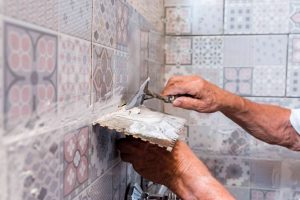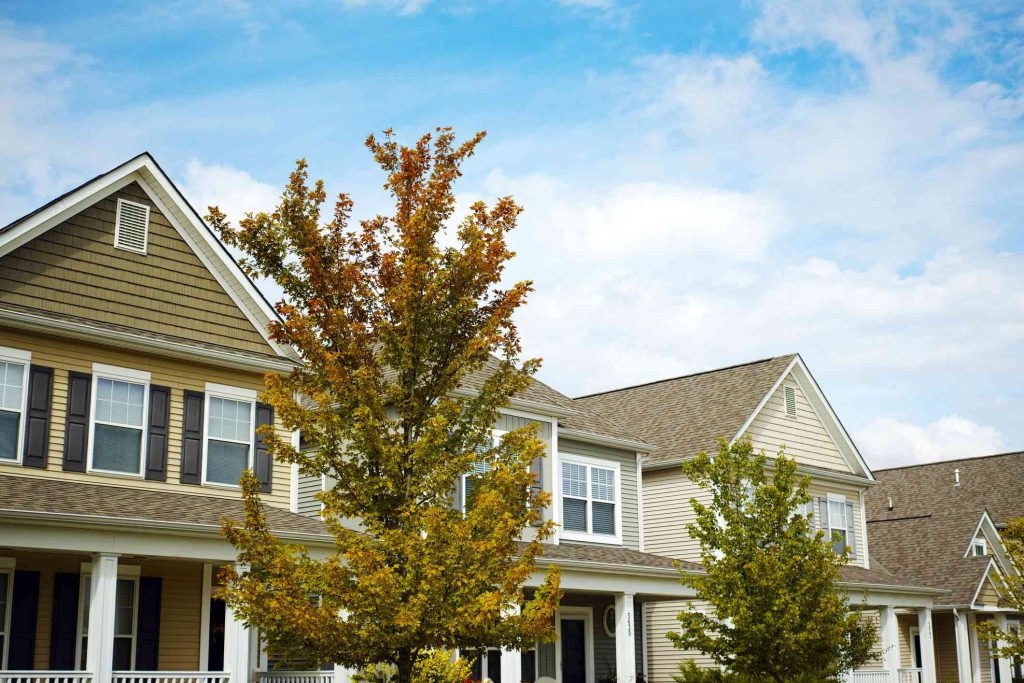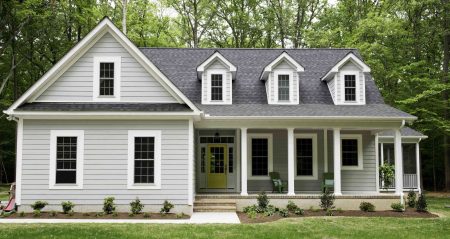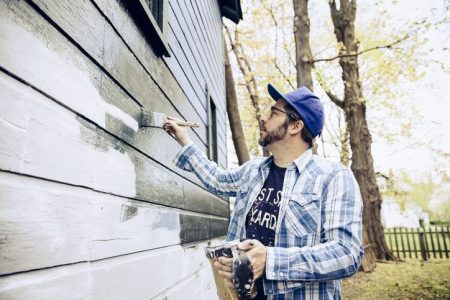When siding your house, it’s that age-old home improvement balancing act between cost and appearance. Yes, you’ve been eyeing that gorgeous quartz countertop at the kitchen design showroom, for example—but the high cost of quartz pulls you back to the point where quartz and laminate both look like good choices. It’s the same with fiber-cement house siding board and vinyl siding.
In so many categories, fiber-cement might prove to be a better choice if not for one thing: the vast gap between the cost of fiber-cement and vinyl siding. Vinyl siding is a lower-cost choice for so many homes, plus it has a few other qualities that just might put it on an equal footing with fiber-cement siding.
Siding Thickness
Fiber-Cement Siding
HardiePlank is significantly thicker than vinyl siding. Just like real wood lap siding, HardiePlank is thick. While thicknesses do vary, HardiePlank averages between 5/16- and 1/4-inch thick.
Vinyl Siding
Vinyl siding is far thinner than HardiePlanks at between 0.040 and .046 inches thick. This means that vinyl siding is considerably thinner than HardiePlank. Vinyl siding can be backed with foam sheathing or insulation, providing greater exterior thickness. Once vinyl siding is installed on a house, it is difficult to discern the product’s total thickness.
Combustibility
Fiber-Cement Siding
HardiePlank is composed of cement-like materials and about 5- to 10-percent cellulose (wood) fibers. Upon cutting, HardiePlank fiber-cement board kicks up clouds of cement dust. Extreme care must be taken since inhaling the dust may result in acute silicosis.
The fortunate byproduct of all of this cement content is that HardiePlank is difficult to burn. James Hardie Industries considers HardiePlank and all of its fiber-cement products to not be “explosive or flammable.” HardiePlank is only considered to be fire-resistant, not fireproof.
Vinyl Siding
Vinyl siding is more affected by fire and extreme heat than HardiePlank. Vinyl siding is treated with fire retardant, but this only retards or slows down the spread of fire. Houses with vinyl siding neighboring a burning house will badly warp in response to the adjacent heat. Often, a burning house will affect an adjacent house with vinyl siding. Barbecue grills set too closely to vinyl siding will warp and distort the siding. Even the concentrated light from mirrors can warp or melt vinyl siding.
Texture and Realism
Fiber-Cement Siding
Because HardiePlank is thicker, it offers deeper texturing than vinyl siding. HardiePlank’s thickness allows for deep embossing, and as a result, it looks closer to real wood than vinyl siding. At the same time, fiber-cement siding’s embossing is uniform enough that it will rarely be mistaken for real wood.
Vinyl Siding
Vinyl siding usually does have a wood-like relief. But the product is too thin to allow for the deep textures found on HardiePlank, other brands of fiber-cement siding, or real wood, for that matter.
Cost
Vinyl siding is nearly always less expensive than fiber-cement siding both in terms of the product and labor costs since it can be installed faster. Still, any cost savings may not be reflected in the eventual sale of your home: For resale value, HardiePlank is the better choice.
Fiber-Cement Siding
A single board of HardiePlank, 12 feet long and 8-1/4 inches wide (5/16 inch thick) in the Primed Cedarmill Lap Siding series, costs $10 to $12. Large format HardiePanel (the HZ5 series, 4-foot by 8-foot) costs about $43.
Vinyl Siding
One piece of Georgia-Pacific Vision Pro Vinyl Siding Panel Double 4 Dutch Lap Clay costs about $9. This is for a board that is 150 inches long and 8 inches wide: 6 inches longer than the HardiePlank board.
Durability
HardiePlank and vinyl siding are both very durable, surpassing wood lap siding (which needs regular painting) and cedar shake (which needs regular treatment).
Both HardiePlank and vinyl siding have little to zero appeal to destructive insects, mainly carpenter ants and termites. Birds that eat insects are rarely interested in either product because neither product harbors the insects that appeal to woodpeckers. If termites do begin to devour a home with either siding, they are interested in the organic materials found in other building elements, such as wood studs, sawdust, wood shavings, and OSB underlayment.
Fiber-Cement Siding
HardiePlank, being essentially a long, thin sheet of concrete, will crack upon impact. HardiePlank will not warp or melt.
Vinyl Siding
Vinyl siding can become damaged when impacted by a lawnmower or shovel. Freezing temperatures make vinyl siding more prone to cracking. Heat will warp it. Place a barbecue too close to vinyl siding and it will be warped beyond repair. Typically, panel replacement is the only fix for warped vinyl siding.
At the same time, vinyl siding is far more flexible than fiber-cement siding, so it can bend without breaking or cracking.
Read the full article here














